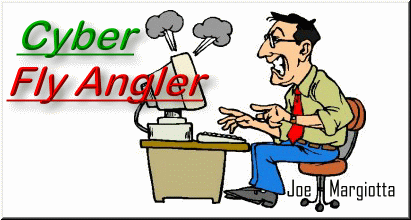E-mail programs are many and varied in features
and ease of use. Most people just use whatever
was provided with their Internet service or
computer operating system, usually standard POP3
(Post Office Protocol ver 3). This e-mail is sent
using SMTP (Simple Mail Transfer Protocol.) This
type of e-mail can be used with mail client software
(e-mail programs) as well as through web based
utilities know as "web mail." Some types of e-mail
can only be used through the providers interface
and are limited to the functions and features that
the provider places in the interface, along with a
few ads. Examples of this type would be AOL
®
mail, Juno®
mail, free services like Hotmail
® and Yahoo
®
mail. Because they are not true POP3 e-mail they can not
be used with an e-mail program and you do not have the
choice of choosing your own software with the features
and ease of use you want or need.
Since most of you have standard POP3 e-mail with
your Internet service, let's talk about your options
for an e-mail program, what they offer and what
demands they may make on your computer's resources.
Here are just a few popular options available:
Outlook Express
®: Comes with Microsoft Windows
®,
susceptible to many viruses. needs Microsoft word to be
installed on your system for the spell checker to work.
Outlook
®: Comes with Microsoft Office
®
Integrated with many "extras", appointment
calendar, etc. requires more system resources and
is susceptible to many viruses. Also need Microsoft
Word to be installed for spell checking.
Incredimail
®: Similar to Outlook in the way it
is used, it offers many "bells and whistles" for
creating very "fancy" email. By default it runs at
startup and continues to check for email and will
notify you with sounds and popup graphics. Uses
more system resources. Allows you to easily create
emails that are so fancy some of the people you send
to won't be able to receive them. But it's fun for
some. Free and pay versions.
The Bat
®: Popular in Europe, available
in most languages. Useful for those that need a
different language. Free trial, pay version.
Eudora Mail
®: Has a user interface that some
find easy, others do not. Has a free trial, pay version.
Mozilla Mail
®: A good mail client with many features
included with the free Mozilla Browser. Good setup for
handling multiple e-mail accounts. Easy on your system.
Spam filtering. It's free.
Mozilla Thunderbird
®: A stand alone version similar to
Mozilla Mail. It does not need to be installed in the
usual way, Just unzip and use by double clicking the
program (thunderbird.exe) in the thunderbird folder.
It makes no demands on your system unless it opened,
and then very little. It adds no backround programs
or registry entries. Also, free.
To set up to send and receive your e-mail on an
email program you will need to have the following
information, not necessarily in this order, to fill
in. If you don't know what to fill in, you should
contact your Internet Service Provider (ISP)
- Your Name: Simple enough, but
remember it will appear along with your e-mail
address. Maybe you just want to use a nickname here.
- E-mail Address: Example: ffexpert@yourservice.com
- Incoming Mail Server (POP3): Example: mail.yourservice.com
- Outgoing Mail Server (SMTP): Example: smtp.yourservice.com
- Username: The one you chose when you set up your service. Example: ffexpert
NOTE: usernames or account names are case
sensitive although you may use any case in your
email address Example: FFExpert@YourService.com
Also, e-mail addresses and server names do NOT
contain spaces.
- Password: You can select
to have the program remember it if you like, or it
will prompt you for it when you get your email.
- Name or Label to refer to this account:
It's just for you to see in using the email software.
Example: My Home Account.
You can set up one of these email clients and try it.
If you don't like it you can use your old one, it does
not eliminate it. In most cases it will ask if you want
to make it you "Default Account", you don't have to or
you can switch it back to the old one later. Most all
will import copies of your address book and even old
email. If you are unhappy with your old program, want
more features or are concerned about viruses that attack
Microsoft ®
e-mail programs you might want to give one of these a try.
There are many e-mail programs besides the ones I mentioned.
They each have their different "feel" and features. You
should be able to find one that you really like.
Tip of the Week
Ever wonder how you can put those special characters into
your e-mail, letters, even your bulletin board posts?
Here's some you may find useful:
To produce the character: Place the cursor in
the e-mail, bulletin board post typing box, word
processing document, etc., where you want the
character to be. Hold down the "Alt" key and
using the numeric keypad (make sure
"Num Lock" is on) type the four number sequence.
The character will appear!
| Char | Alt + | Symbol for |
| © | 0169 | Copyright |
| ® | 0174 | Registered |
| ± | 0177 | Plus or Minus |
| ÷ | 0247 | Divided by |
| ° | 0176 | Degree |
| ¼ | 0188 | Fraction 1/4 |
| ½ | 0189 | Fraction 1/2 |
| ¾ | 0190 | Fraction 3/4 |
| Ø | 0216 | Slash zero |
| £ | 0163 | British pound |
| Ñ | 0209 | Spanish eñe upper case |
| ñ | 0241 | Spanish eñe lower case |
Hope you find this useful ~ JM
|

